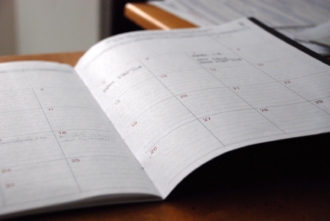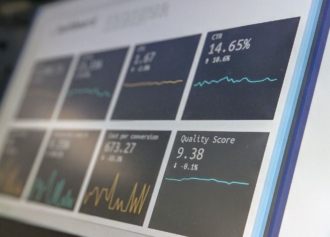A few years ago, Dr. Stephen Trzeciak and Dr. Anthony Mazzarelli found themselves managing one of the most complex cases of their careers. But it wasn’t a complicated medical condition or a high-risk procedure. Instead, they were tasked with addressing physician burnout.
Affecting more than half of US doctors, burnout is defined as a work-related syndrome that can cause emotional exhaustion and a sense of reduced personal accomplishment.
While burnout is known for the emotional and physical toll it can take on workers, it also has an effect on customers — in this case, patients. Evidence shows that medical burnout can lead to physician errors and reduced empathy for patients, which can have grave consequences.
To address burnout issues among doctors, many healthcare systems are implementing wellness programs and encouraging doctors to seek therapy or, when possible, work less.
But in their research, Trzeciak and Mazzarelli found an unlikely solution for dealing with burnout: compassion. Reviewing all the relevant scientific research they could find led them to discover that when health care providers take the time to make human connections, patient outcomes improve and medical costs decrease.
Focusing on connection doesn’t just improve outcomes for patients — the pair found it also prevents doctor burnout. While many medical students are taught that keeping an emotional distance from patients will burn them out, their findings show the opposite: that connecting with patients ultimately leads to more happiness and fulfillment.
The scope of the burnout problem
Psychologist Herbert Freudenberger coined the term “burnout” in the 1970s to describe the consequences of severe stress in “helping” professions like medicine or education. But in 2019, the problem is much bigger than just the medical world. Surveys show 40 to 50 percent of people feel burned out at a given time, which means nearly half of the population is more exhausted and stressed than necessary. But there are other ill effects: there’s evidence that burnout can negatively impact employee performance and even lead to depression.
Hustle culture, or as authors Brad Stulberg and Steve Magness call it, “results first” and “pay for performance” and “selfie” culture, makes us especially vulnerable to burning out. Because instead of being present with our work and our people, we’re always focused on the next best thing.
Here’s one reason that kind of mindset can become a problem:
If we obsess over external factors like money, job titles, and prestige, we will endlessly chase after metrics and numbers. But chasing these things is like chasing the wind.
Sure, maybe you’ll get that promotion you’ve been vying for or meet your sales goals for the quarter, but the bar for success will only get higher the more you win. It’s an endless cycle, and it’s also a recipe for disaster.
Rather than working toward arbitrary external variables, Stulberg and Magness recommend re-centering on more deeply satisfying internal factors like autonomy, craft, and connection — all of which can play a huge role in preventing burnout.
The burnout solution
I’ve learned an important lesson over the years. No number of weekend getaways or yoga sessions will solve your burnout problem if you’re not feeling connected to what you’re doing, and who you’re doing it for.
When my team and I started working on our mobile app in 2018, everyone in the office worked extra hours for several weeks. All of us were excited to collaborate on something that would change the landscape of our business.
But as we got closer to launch day, the entire environment of the office changed. Not only did people grow more easily irritated with one another, our brainstorm sessions felt lifeless and dull. I now know why they call it “burnout” — it was like our creative spark had been put out.
Looking back, I see clearly that the problem wasn’t that we were working too much or too hard. There’s a time and a place for putting in a few extra hours, and building a new app is one of them.
The issue was that we were disconnected — not just from each other, but from Jotform’s mission and, as a result, our customers.
A few months before we set out to design the mobile app, a customer had shared with us that she wanted the functionality to fill out forms on her phone, and then sync the data online later.
Our purpose was never to build a new product to improve our ratings or make more money. We genuinely wanted to improve our customers’ lives.
Somewhere among all the chaotic days and late nights, that purpose got lost.
Re-centering with our mission gave me a new perspective. I realized that to be creative and passionate once more, we had to scrap the “product” mindset and instead connect with our customers.
And the overhaul worked. When we started thinking about the mobile app not just as a form on a phone but as a tool for our customers, everything changed. We broke through barriers that had been burdening us for months. We came up with creative ways to make the app more efficient and effective.
Most importantly, we had fun. And it wasn’t because we worked less. It was because we found a new way to work.
Reconnecting with your purpose
As Stulberg and Magness state in their book The Passion Paradox,
“burnout isn’t just about how people work, but also about why people work and what drives them.”
Yes: It can’t hurt to take a few days off the grid or set some boundaries with your work if you’re losing steam in your creative or professional life. Rest is a foundational part of well-being, no matter how passionate you are.
But don’t forget about another important tool: taking time to think about your “why.”
When we love the work we’re doing and how our work makes us feel — when we’re connected to our “why,” not just our “what” — we cannot only dodge the effects of burnout but find ourselves more creative and effective.
To address burnout and creative fatigue, connect with the people your product or service will touch. Who is it you’re serving, and how can your passion and work improve their lives?
Then, try your best to remember your personal tipping point and regularly reflect on what drove you to start your work in the first place.
You might find yourself burning the midnight oil, but you’ll feel more awake and alive than ever.














Send Comment: